Seawatching Ngor – October & November 2019
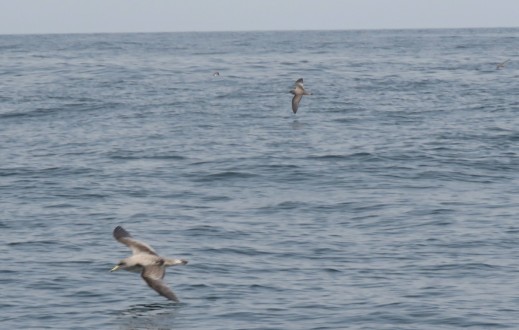
We’re entering the final stretch of this year’s seawatch season, but before we wrap things up in a few weeks, it’s time for a quick overview of October and November. As for August and September, below is a comparison of the 2019 counts with those from the previous two years. Even if observer effort and coverage were quite different in those three years, it’s clear that there are important variations from year to year, both in terms of phenology and in terms of abundance of many of the seabirds that migrate past the Dakar peninsula. Prevailing weather conditions, and in particular dominant wind direction (and wind force), of course have a strong influence on the intensity of visible seabird migration, though other factors are also at play for certain species. Annual variations in breeding success of skuas are well documented and probably explain some of the annual differences that we see here in Dakar.
This year’s coverage was again pretty good for October (28 sessions on 24 days, similar to Oct. 2017) but less so for November (15 sessions on 12 days), though we did manage to do longer counts during both months, especially in November. But let’s start with October:
Species |
2019 |
2018 |
2017 |
| Cory’s/Scopoli’s Shearwater |
86 |
0 |
232 |
| Sooty Shearwater |
631 |
1,035 |
2,534 |
| Manx Shearwater |
20 |
8 |
29 |
| Shearwater sp. |
24 |
4 |
22 |
| Wilson’s Storm-Petrel |
0 |
0 | 96 |
|
Northern Gannet |
3 | 2 |
1 |
| Brown Booby |
0 |
1 | 0 |
| Oystercatcher |
24 |
20 | 18 |
|
Common Ringed Plover |
2 | 0 |
5 |
|
Whimbrel |
32 | 4 |
8 |
| Bar-tailed Godwit |
8 |
0 | 10 |
| Turnstone |
6 |
0 | 0 |
| Ruff |
0 |
0 | 12 |
| Dunlin |
0 |
0 |
2 |
|
Sanderling |
16 |
6 |
0 |
| Little Stint |
6 |
0 | 0 |
|
Common Sandpiper |
4 | 0 |
0 |
|
Greenshank |
0 | 0 |
1 |
|
Common Redshank |
3 | 5 |
0 |
| Grey (Red) Phalarope |
12 |
0 | 78 |
|
Audouin’s Gull |
77 | 21 |
55 |
| Lesser Black-backed Gull |
3 |
18 | 2 |
| Yellow-legged Gull |
1 |
0 |
0 |
|
Large gull sp. |
8 | 0 |
7 |
| Slender-billed Gull |
6 |
1 | 4 |
|
Grey-headed Gull |
2 | 0 |
0 |
| Sabine’s Gull |
1,081 |
178 | 2,970 |
|
Arctic/Common Tern |
3,768 | 1,094 |
4,296 |
| Roseate Tern |
6 |
14 | 54 |
| Little Tern |
65 |
7 |
78 |
|
Sandwich Tern |
2,479 |
905 | 1,313 |
|
Lesser Crested Tern |
299 | 113 |
150 |
| African Royal Tern |
457 |
198 | 57 |
| Caspian Tern |
22 |
20 |
9 |
|
Black Tern |
1,059 | 333 |
2,735 |
| Whiskered Tern |
1 |
0 | 1 |
|
Bridled Tern |
1 | 0 |
0 |
| Bridled/Sooty Tern |
1 |
0 | 0 |
|
Great/South Polar Skua |
60 | 11 |
66 |
| Pomarine Skua |
763 |
85 | 1436 |
|
Arctic Skua |
486 | 198 |
339 |
| Long-tailed Skua |
47 |
21 | 32 |
|
Skua sp. |
476 | 182 |
1138 |
|
Total birds |
12,045 | 4,484 | 17,880 |
|
Number of days |
24 |
10 |
26 |
|
Number of hours |
37h30′ | 19h00′ |
28h20′ |
October was relatively quiet compared to previous years, mostly because conditions were not so favourable during the last 10 days of the month, hitting an absolute low on Oct. 31st when only 68 birds were counted in one hour… With hardly any wind, far fewer Sooty Shearwaters and Pomarine Skuas than usual were noted (Puffin fuligineux, Labbe pomarin). Most terns however were more numerous, possibly due to a later passage than in previous years, particularly for African Royal, Lesser Crested and Sandwich Terns (Sternes royales, voyageuses, caugeks). With just over 1,000 birds, the passage of Sabine’s Gull was fairly average though still very enjoyable on two days: 220 in 2h45’ on Oct. 12, and 315 in 3h20’ on Oct. 17 (Mouette de Sabine). Among the rarer species, an ad. Bridled Tern was seen on Oct. 12 (+ a distant Bridled or Sooty on Oct. 8; Sterne bridée).
November was a different story: with a fairly similar number of hours spent counting birds from the Calao terrace, almost double the number of birds were counted than in 2017. A much stronger passage was noted for many species: Cory’s/Scopoli’s Shearwaters (56,438 birds counted: almost twice the 2017 number and triple that of 2018!), Great Shearwaters, Sooty Shearwaters, Northern Gannets, and Pomarine & Arctic Skuas (Puffin cendré / de Scopoli, Puffin majeur, fuligineux, Fou de Bassan, Labbes pomarins et arctiques). Because we were present on less days but spent more time per session, it’s hard to compare with previous years, though it’s clear that at least some of these species were more numerous, such as the Gannets that passed through en masse from the 10th onward (max. 1,223 birds in 90’ on Nov. 20!), which is far earlier than in previous years when peaks were noted from the end of the month and in December. The higher number of skuas and Sooty Shearwaters are also at least in part explained by the later passage, properly starting only around November 10th rather than in the last week of October. Only one Long-tailed Skua was identified during this period, at the very start of the month, bringing this season’s total to 489 birds.
The peak passage of Cory’s/Scopoli’s Shearwaters took place during Nov. 10-16, with up to 4,020 birds passing through per hour during the morning of the 10th. While slightly less intense in previous years, the highly concentrated passage took place almost exactly during the same period. It’s really remarkable how this species pair is completely absent up to the very last week of October: the first 45 birds were seen on Oct. 28th with just a handful in subsequent days, then 638 in 1h15’ on Nov. 4th and 215 in 1h45’ the following day, then literally exploding just a few days later (unfortunately no observations were made during Nov. 6-9). Our counters nearly overheated, thumbs hurting! In comparison, the migration pattern of Sooty Shearwater for instance is very different, showing a very long and diffuse migration season (end August – mid December) without a clearly defined peak.
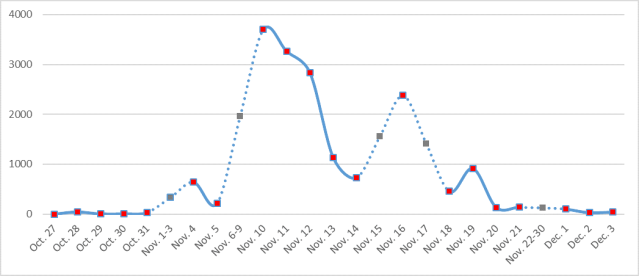
Daily average number of Cory’s & Scopoli’s Shearwater per hour (2019). The dotted lines and grey markers indicate extrapolated data; red markers are based on actual counts
Besides this really impressive flow of the shearwaters, the highlights in November were our first (ever!) Leach’s Storm Petrels (Océanite cul-blanc), the good number of Great Shearwaters of course – confirming that quite a few pass through Senegalese waters at this time of the year – a fine Balearic Shearwater (Nov. 18; Puffin des Baléares), and an imm. Red-footed Booby seen twice flying past the Calao (Fou à pieds rouges). Another big surprise and clearly one of my highlights was a huge Killer Whale (Orque) swimming past at mid-range, apparently heading SW – not my first here at Ngor, but this one was really impressive, nicely showing its massive dorsal fin.
November summary:
Species |
2019 |
2018 |
2017 |
| Cory’s/Scopoli’s Shearwater | 56,438 | 18,593 | 30,836 |
| Great Shearwater | 125 | 32 | 0 |
| Sooty Shearwater | 1,174 | 573 | 526 |
| Balearic Shearwater | 1 | 0 | 0 |
| Manx Shearwater | 5 | 4 | 1 |
| Shearwater sp. | 16 | 31 | 2 |
| European Storm-Petrel | 0 | 0 | 1 |
| Leach’s Storm-Petrel | 3 | 0 | 0 |
| Storm-Petrel sp. | 10 | 0 | 0 |
| Northern Gannet | 3,896 | 1,239 | 60 |
| Brown Booby | 0 | 2 | 3 |
| Red-footed Booby | 1 | 1 | 0 |
| Oystercatcher | 0 | 0 | 2 |
| Common Ringed Plover | 0 | 0 | 1 |
| Grey Plover | 1 | 0 | 0 |
| Whimbrel | 9 | 4 | 0 |
| Bar-tailed Godwit | 5 | 0 | 0 |
| Grey Phalarope | 1 | 0 | 26 |
| Audouin’s Gull | 255 | 514 | 40 |
| Lesser Black-backed Gull | 37 | 2 | 17 |
| Yellow-legged Gull | 3 | 0 | 0 |
| Large gull sp. | 47 | 0 | 5 |
| Slender-billed Gull | 10 | 1 | 1 |
| Sabine’s Gull | 144 | 13 | 226 |
| Arctic/Common Tern | 1,272 | 836 | 764 |
| Little Tern | 14 | 14 | 1 |
| Sandwich Tern | 313 | 105 | 178 |
| Lesser Crested Tern | 2 | 7 | 18 |
| African Royal Tern | 19 | 9 | 2 |
| Caspian Tern | 3 | 1 | 2 |
| Black Tern | 29 | 3 | 321 |
| Catharacta Skua sp. | 32 | 23 | 5 |
| Pomarine Skua | 2,917 | 2,144 | 1,819 |
| Arctic Skua | 149 | 66 | 76 |
| Long-tailed Skua | 1 | 1 | 9 |
| Skua sp. | 149 | 60 | 313 |
| Total birds | 63,833 | 21,984 | 33,033 |
| Total days | 12 | 21 | 20 |
| Number of hours | 33h | 30h30′ | 28h |
November 11th clearly was one of our most memorable Seawatch sessions ever: in just 3 hours, we counted an impressive 12,492 birds belonging to 23 species, a remarkable diversity at this time of the year: check out our eBird checklist here!
Once again, needless to say that Dakar clearly ranks as one of the top seawatch spots in the world!

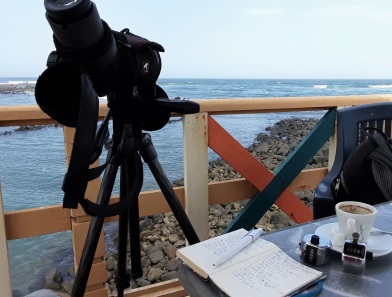
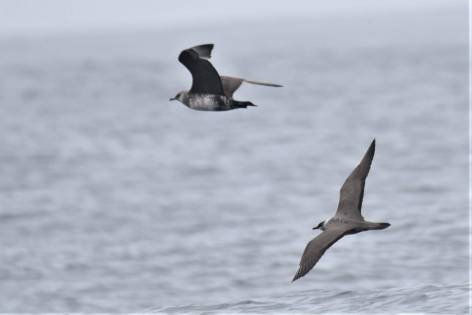
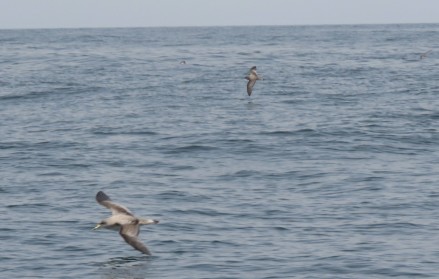








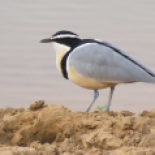

















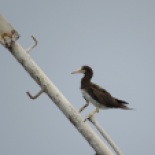












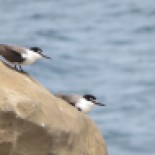












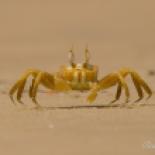









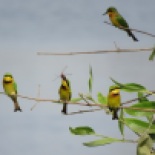


















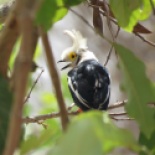




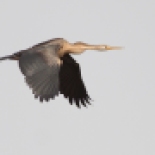
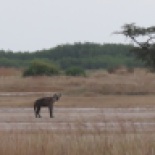










































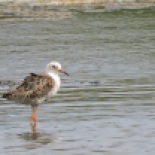


















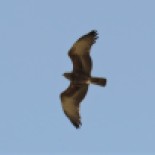








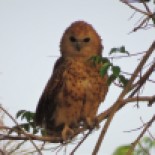
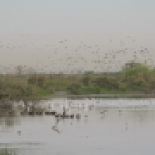












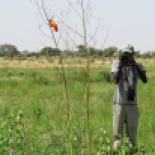





















Thank you for these ever so interesting reports, photos, counts and lists!
Priska
Thanks Priska, glad you enjoy reading my posts! Unfortunately I don’t have much time to write at the moment… Greetings from the Calao!